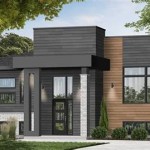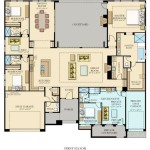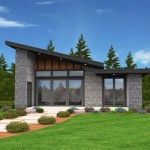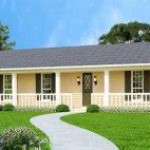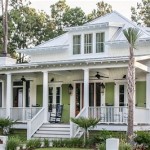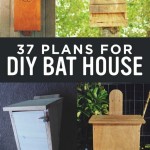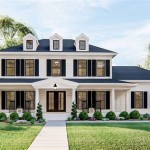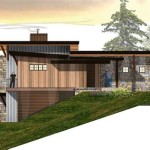Antebellum House Plans encompass architectural blueprints and designs that were prevalent before the American Civil War, spanning approximately from 1830 to 1860. These plans served as guides for constructing grand and opulent residences that epitomized the architectural styles and social norms of the American South during that era.
Antebellum House Plans were meticulously crafted by architects and builders, often incorporating elements of Greek Revival, Gothic Revival, or Italianate styles. They typically featured expansive floor plans with high ceilings, intricate moldings, and grand staircases. Porches, balconies, and verandas were ubiquitous, offering comfortable outdoor living spaces and enhancing the overall aesthetic appeal of these homes.
Moving forward, we will delve into the intricate details of Antebellum House Plans, exploring their architectural significance, the materials and techniques employed in their construction, and the social and cultural context that shaped their design.
Antebellum House Plans are characterized by several key features:
- Greek Revival, Gothic Revival, Italianate influences
- Expansive floor plans, high ceilings
- Intricate moldings, grand staircases
- Porches, balconies, verandas
- Formal dining and living rooms
- Separate kitchens and service areas
- Large windows, natural lighting
- Symmetrical facades, classical proportions
- Fine craftsmanship, attention to detail
- Reflection of social hierarchy, wealth
These features combine to create grand and elegant homes that embody the architectural legacy of the American South.
Greek Revival, Gothic Revival, Italianate influences
### Greek RevivalGreek Revival architecture was a popular style for Antebellum House Plans, inspired by the classical architecture of ancient Greece. Greek Revival homes are characterized by their symmetrical facades, columns, pediments, and large windows. The Parthenon in Athens served as a major inspiration for this style, with its emphasis on balance, proportion, and harmony.### Gothic RevivalGothic Revival architecture, inspired by medieval European cathedrals, was another influential style for Antebellum House Plans. Gothic Revival homes feature pointed arches, vaulted ceilings, and intricate decorative elements. They often evoke a sense of mystery and romance, with their tall towers, stained glass windows, and elaborate ornamentation.### ItalianateItalianate architecture, influenced by the Renaissance and Baroque periods in Italy, was also popular for Antebellum House Plans. Italianate homes are characterized by their low-pitched roofs, wide eaves, and round-arched windows and doors. They often feature balconies, balustrades, and decorative moldings, creating a sense of grandeur and elegance.
These three architectural styles were not mutually exclusive, and many Antebellum House Plans incorporated elements from multiple styles. For example, a home might have a Greek Revival facade with Gothic Revival windows and an Italianate veranda. This eclecticism reflects the diverse influences that shaped the architecture of the American South during the antebellum period.
Expansive floor plans, high ceilings
Antebellum House Plans are characterized by their expansive floor plans and high ceilings. These features were not merely aesthetic choices; they served important social and practical functions. Here are the key points related to this aspect:
- Social hierarchy and status: In the antebellum South, social status was paramount. The size and grandeur of one’s home was a direct reflection of their wealth and position in society. Expansive floor plans and high ceilings allowed for the grand entertaining and lavish parties that were a hallmark of the antebellum lifestyle.
- Formal entertaining: Antebellum homes were designed to accommodate large gatherings and formal events. The expansive floor plans provided ample space for guests to mingle and socialize, while the high ceilings created a sense of grandeur and spaciousness.
- Natural ventilation and cooling: The hot and humid climate of the American South necessitated effective ventilation and cooling strategies. High ceilings allowed for warm air to rise and escape through upper windows, while the expansive floor plans facilitated cross-ventilation. This natural cooling system helped to keep homes comfortable during the summer months.
- Abundant natural light: Large windows and high ceilings allowed for ample natural light to flood into Antebellum homes. This not only created a bright and airy atmosphere but also reduced the need for artificial lighting, which was expensive and inefficient at the time.
Together, these factors made expansive floor plans and high ceilings essential elements of Antebellum House Plans, reflecting the social, practical, and climatic conditions of the American South during that era.
Intricate moldings, grand staircases
Intricate moldings and grand staircases were prominent features in Antebellum House Plans, serving both aesthetic and functional purposes. Here are the key points related to each element:
- Intricate moldings
Ornate moldings were extensively used throughout Antebellum homes, adding an air of elegance and sophistication. These moldings were often found around , windows, ceilings, and baseboards. Common molding styles included cornices, dentils, and chair rails. They were crafted from a variety of materials, including wood, plaster, and marble. Intricate moldings not only enhanced the visual appeal of Antebellum homes but also helped to define and separate different spaces within the house. - Grand staircases
Sweeping, grand staircases were a focal point of many Antebellum homes. They were typically located in the foyer or entrance hall and served as a dramatic architectural element. Staircases were often made of wood or iron and featured elaborate banisters and newel posts. In larger homes, staircases might even have multiple landings or curves, creating a sense of grandeur and opulence. Grand staircases were more than just a means of getting from one floor to another; they were also a symbol of the wealth and status of the homeowner.
Together, intricate moldings and grand staircases added to the overall aesthetic appeal and functionality of Antebellum House Plans. They reflected the refined tastes and social aspirations of the antebellum South.
Porches, balconies, verandas
Porches, balconies, and verandas were ubiquitous features of Antebellum House Plans, serving both practical and social functions. These outdoor living spaces provided a seamless connection between the interior and exterior of the home, allowing occupants to enjoy the beauty of the surrounding landscape while also engaging in social activities.
- Porches
Porches were typically covered, wrap-around extensions of the house, providing a shaded and protected outdoor space. They were often used for relaxing, reading, or entertaining guests. Porches also served as a buffer between the interior of the home and the harsh outdoor elements, helping to regulate temperature and humidity. - Balconies
Balconies were elevated platforms projecting from the exterior wall of the house, often accessible from bedrooms or other upstairs rooms. They provided a private outdoor space with views of the surrounding area. Balconies were popular spots for enjoying the fresh air, reading, or simply taking in the scenery. - Verandas
Verandas were similar to porches but were typically larger and more elaborate. They often featured columns, railings, and decorative moldings, creating a more formal and elegant outdoor space. Verandas were used for entertaining guests, hosting social gatherings, and enjoying the outdoors in style.
Porches, balconies, and verandas were essential elements of Antebellum House Plans, reflecting the Southern lifestyle’s emphasis on outdoor living and social interaction. They provided comfortable and stylish spaces for relaxation, entertainment, and enjoying the beauty of the natural surroundings.
Formal dining and living rooms
Formal dining and living rooms were central to the social life and etiquette of the antebellum South. These rooms were designed to impress guests and showcase the wealth and status of the homeowner.
Formal dining rooms
Formal dining rooms were typically large and well-appointed, with high ceilings, intricate moldings, and elegant furnishings. They were used for special occasions, such as dinner parties and holiday gatherings. The dining table was often the centerpiece of the room, surrounded by fine chairs and elaborate sideboards. Large windows provided ample natural light, creating a bright and airy atmosphere.
Formal living rooms
Formal living rooms were also grand spaces, used for receiving guests and entertaining. They were typically furnished with comfortable sofas, chairs, and tables, as well as decorative items such as paintings, sculptures, and mirrors. Formal living rooms often featured fireplaces, adding an element of warmth and coziness. In larger homes, there might even be separate formal parlors or drawing rooms for specific purposes, such as entertaining ladies or gentlemen.
The formal dining and living rooms in Antebellum House Plans were not just rooms; they were statements of social status and wealth. They reflected the importance of hospitality and social etiquette in the antebellum South.
Separate kitchens and service areas
Antebellum House Plans typically included separate kitchens and service areas, reflecting the social hierarchy and division of labor that existed in the antebellum South.
- Separate kitchens
Kitchens were typically located in a separate building or wing of the house, away from the main living quarters. This separation helped to isolate the noise, heat, and smells of cooking from the rest of the house. Kitchens were often staffed by enslaved or paid cooks and kitchen staff, who were responsible for preparing and serving meals. - Service areas
Service areas, such as pantries, sculleries, and washrooms, were also typically located in a separate part of the house. These areas were used for storing food, preparing meals, and cleaning up. Service areas were often connected to the kitchen by a dumbwaiter or backstairs, allowing for efficient movement of food and supplies. - Backstairs
Many Antebellum House Plans included backstairs, which were used by servants and other staff to move discreetly between the kitchen and service areas and the main living quarters of the house. Backstairs helped to maintain the separation between the private and public spaces of the home. - Separate dining rooms
In larger Antebellum homes, there were often separate dining rooms for the family and the servants. The family dining room was typically located in the main part of the house, while the servants’ dining room was located in the kitchen or service area. This separation reinforced the social hierarchy of the household.
The separation of kitchens and service areas in Antebellum House Plans was a reflection of the social and economic realities of the antebellum South. It allowed for the efficient operation of the household while maintaining the social distinctions between the family and the servants.
Large windows, natural lighting
Antebellum House Plans emphasized large windows and natural lighting, reflecting both practical and aesthetic considerations.
- Abundant natural light
Large windows allowed for ample natural light to flood into Antebellum homes, creating a bright and airy atmosphere. This not only made the homes more comfortable and inviting but also reduced the need for artificial lighting, which was expensive and inefficient at the time.
- Passive solar heating
The large windows also served a practical purpose by providing passive solar heating. During the winter months, the sun’s rays could enter the home through the windows and warm the interior spaces. This helped to reduce the need for firewood or other heating sources, making the homes more energy-efficient.
- Connection to the outdoors
Large windows provided a visual connection between the interior and exterior of the home, allowing occupants to enjoy the beauty of the surrounding landscape. This connection to nature was an important aspect of the antebellum lifestyle.
- Aesthetic appeal
In addition to their practical benefits, large windows also added to the aesthetic appeal of Antebellum homes. The symmetrical arrangement of windows on the facade created a sense of balance and harmony, while the intricate moldings and cornices around the windows added an air of elegance and sophistication.
The emphasis on large windows and natural lighting in Antebellum House Plans reflects the importance of both comfort and aesthetics in the antebellum South. These features contributed to the overall livability and beauty of these historic homes.
Symmetrical facades, classical proportions
Antebellum House Plans often featured symmetrical facades and classical proportions, reflecting the architectural influences of ancient Greece and Rome.
- Symmetrical facades
Symmetry was a key principle in Antebellum architecture. The facades of these homes were typically symmetrical, with the front door and windows arranged in a balanced and orderly manner. This symmetry created a sense of harmony and visual appeal.
- Classical proportions
Antebellum architects drew inspiration from the classical architecture of ancient Greece and Rome. They used classical proportions, such as the golden ratio, to create a sense of balance and harmony in their designs. The height of the columns, the width of the windows, and the overall proportions of the facade were all carefully calculated to achieve a pleasing aesthetic effect.
- Pediments
Pediments were a common feature on Antebellum facades. These triangular gables were often placed above the front door or windows and added a touch of formality and elegance to the design.
- Columns
Columns were another important element of Antebellum facades. They were used to support the porch roof and to add a sense of grandeur to the entrance. Columns were often made of wood or stone and were typically topped with decorative capitals.
The use of symmetrical facades and classical proportions in Antebellum House Plans reflected the desire of antebellum architects to create homes that were both beautiful and timeless. These design principles have continued to influence architecture to this day, and they can still be seen in many modern homes.
Fine craftsmanship, attention to detail
Antebellum House Plans were renowned for their fine craftsmanship and attention to detail. Skilled artisans and builders took great pride in their work, using the finest materials and techniques to create homes that were both beautiful and durable.
- Use of high-quality materials
Antebellum homes were typically built using the finest materials available, including heart pine for framing, cypress for siding, and marble or granite for fireplaces and countertops. These materials were chosen for their strength, durability, and beauty. - Expert craftsmanship
The artisans who built Antebellum homes were highly skilled craftsmen who took great pride in their work. They used traditional joinery techniques, such as mortise and tenon joints, to create strong and durable structures. The intricate moldings, carvings, and other decorative elements were all hand-crafted, demonstrating the skill and artistry of the builders. - Attention to detail
No detail was too small for the builders of Antebellum homes. They paid close attention to every aspect of the design, from the overall proportions of the house to the smallest details, such as the hardware on the doors and windows. This attention to detail resulted in homes that were both beautiful and functional. - Timeless design
The fine craftsmanship and attention to detail that went into Antebellum House Plans has resulted in homes that have stood the test of time. Many of these homes are still standing today, over 150 years after they were built. They continue to be admired for their beauty, craftsmanship, and timeless design.
The fine craftsmanship and attention to detail that are evident in Antebellum House Plans are a testament to the skill and artistry of the builders who created them. These homes are a valuable part of our architectural heritage, and they continue to inspire admiration and appreciation today.
Reflection of social hierarchy, wealth
Antebellum House Plans were not merely architectural designs; they were also a reflection of the social hierarchy and wealth of the antebellum South.
- Size and grandeur
The size and grandeur of an Antebellum home was a direct reflection of the owner’s wealth and status. Larger homes with more elaborate designs were typically owned by wealthier families. These homes often had multiple stories, large porches, and extensive gardens.
- Architectural style
The architectural style of an Antebellum home also indicated the owner’s social status. Greek Revival homes, with their classical columns and pediments, were popular among the elite. Gothic Revival homes, with their pointed arches and stained glass windows, were favored by those who wished to project an image of refinement and culture. Italianate homes, with their low-pitched roofs and wide eaves, were popular among the middle class.
- Interior
The interior decoration of an Antebellum home also reflected the owner’s wealth and status. Wealthy families often filled their homes with fine furniture, paintings, and sculptures. They also had the latest in modern conveniences, such as running water and gas lighting.
- Location
The location of an Antebellum home was also important. Homes located in desirable areas, such as near town centers or on waterfront property, were more valuable and prestigious than those located in less desirable areas.
Antebellum House Plans were thus a reflection of the social hierarchy and wealth of the antebellum South. The size, style, decoration, and location of a home all indicated the owner’s place in society.










Related Posts

